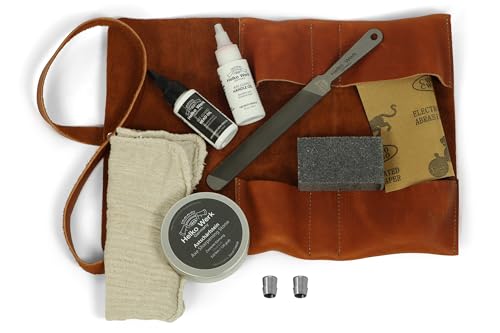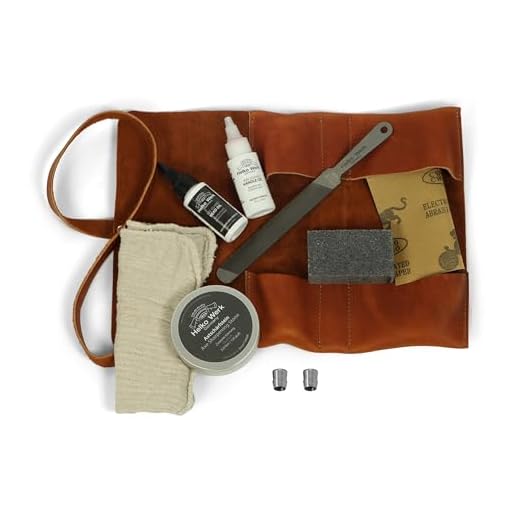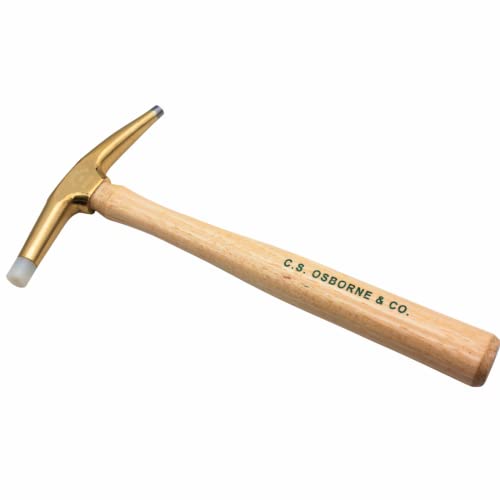


If you’re looking to give your axe handle a fresh new look, painting it can be a great option. Not only does painting your axe handle add a personal touch to your tool, but it can also provide added protection against the elements. Whether you want to paint your axe handle a vibrant color or add intricate designs, this guide will walk you through the process step by step.
The first step in painting an axe handle is to prepare the surface. Start by cleaning the handle with a mild detergent and water to remove any dirt or debris. Once the handle is clean, sand it lightly with a fine-grit sandpaper to create a smooth surface for the paint to adhere to. Wipe away any sanding residue with a damp cloth and allow the handle to dry completely before moving on to the next step.
Next, choose the type of paint you want to use for your axe handle. Acrylic paint is a popular choice due to its versatility and durability. Before applying the paint, it’s a good idea to apply a primer to the handle. This will help the paint adhere better and prevent chipping or peeling. Follow the instructions on the primer and allow it to dry completely before moving on to the next step.
Once the primer is dry, it’s time to start painting your axe handle. Using a brush, apply an even coat of paint to the handle, making sure to cover all sides and edges. Allow the first coat to dry completely before applying a second coat if desired. Multiple thin coats are better than one thick coat as it helps prevent drips and ensures a smooth finish. Once the final coat is applied, allow the paint to dry completely before handling or using your newly painted axe handle.
In conclusion, painting your axe handle is a simple and fun way to personalize your tool and provide added protection. By following these steps and taking your time, you can achieve a professional-looking finish that will make your axe handle stand out from the rest.
Step-by-step guide on painting an axe handle
Painting the handle of an axe can not only improve its appearance but also provide protection against the elements. Follow these steps to paint your axe handle:
Materials you will need:
- Sandpaper (120-grit and 220-grit)
- Primer
- Paintbrush
- Paint (enamel or oil-based)
- Paint thinner (if using oil-based paint)
- Clear coat (optional)
Step 1: Prepare the surface
Start by sanding the axe handle with 120-grit sandpaper. This will help remove any existing finish or rough spots. Once you have sanded the entire handle, switch to 220-grit sandpaper and sand again to create a smoother surface.
Step 2: Apply primer
Using a paintbrush, apply a thin coat of primer to the axe handle. Make sure to cover the entire surface evenly. Allow the primer to dry completely according to the manufacturer’s instructions.
Step 3: Paint the axe handle
Once the primer is dry, apply a thin and even coat of paint to the handle. Start from one end and work your way towards the other, making sure to cover the entire handle. Allow the first coat to dry completely before applying additional coats if needed.
Step 4: Optional clear coat
If you want added protection and a glossy finish, you can apply a clear coat after the paint has dried. Follow the instructions on the clear coat product and apply it evenly to the axe handle.
With these simple steps, you can easily paint your axe handle and give it a fresh new look. Remember to allow adequate drying time between each step to ensure the best results.
Preparing the Axe Handle
Before you begin the process of painting the axe handle, it is important to properly prepare the surface to ensure a smooth and long-lasting finish. Follow these steps to prepare the axe handle:
1. Clean the Axe Handle: Start by cleaning the axe handle with a mild soap and water solution. This will remove any dirt, dust, or grease that may be present on the surface.
2. Sand the Surface: Use a fine-grit sandpaper to lightly sand the axe handle. This will help roughen up the surface and create a better bond between the paint and the wood. Sand in the direction of the grain to avoid damaging the wood.
3. Fill Any Cracks or Imperfections: Inspect the axe handle for any cracks or imperfections. If you find any, use a wood filler or epoxy to fill them in. Allow the filler to dry completely, and then sand the area smooth.
4. Remove Dust: After sanding, wipe the axe handle with a clean, damp cloth to remove any dust or debris that may have accumulated. This will ensure a clean and smooth surface for painting.
5. Mask Off any Areas: If there are any areas of the axe handle that you do not want to paint, such as the metal end or the blade, use painter’s tape to mask off these areas. This will protect them from accidental paint application.
By properly preparing the axe handle, you will create a solid foundation for the paint and ensure a professional-looking finish.
Cleaning the axe handle
Before painting the axe handle, it is essential to clean it thoroughly. This will ensure that the paint adheres properly and results in a smooth, even finish. Here are the steps to clean the axe handle:
- Remove any dirt or debris from the handle by wiping it with a cloth or brush.
- Fill a bucket with warm water and add a few drops of mild dish soap.
- Dip a sponge or cloth into the soapy water and gently scrub the handle, removing any built-up grime or stains.
- Rinse the handle with clean water to remove any soap residue.
- Dry the handle with a clean cloth or allow it to air dry.
- If there are any stubborn stains or marks, you can use fine-grit sandpaper to gently sand the surface.
- Wipe away any dust or debris produced by sanding.
Once the axe handle is clean and dry, it will be ready for painting. Cleaning the handle is an important step in achieving a professional-looking finish, so take your time and ensure that it is thoroughly cleaned before moving on to the next step.
Applying primer to the axe handle
Before painting your axe handle, it is important to apply a coat of primer. Primer helps to create a smooth and even surface for the paint to adhere to, as well as provide additional protection for the wood.
Step 1: Sanding the handle
Start by sanding the axe handle with fine-grit sandpaper to remove any rough spots or imperfections. This will help the primer and paint adhere better to the wood.
Step 2: Cleaning the handle
After sanding, wipe down the handle with a damp cloth to remove any dust or debris. Make sure the handle is completely dry before moving on to the next step.
Apply the primer to the axe handle using a paintbrush or foam roller. Make sure to cover the entire surface of the handle, including any grooves or contours. Allow the primer to dry completely according to the manufacturer’s instructions.
Once the primer is dry, lightly sand the handle again with fine-grit sandpaper to smooth out any rough areas. Wipe away any dust with a clean cloth.
Applying primer is an important step in the painting process as it helps to create a strong foundation for the paint and ensures a long-lasting finish on your axe handle.
Painting the axe handle
When it comes to painting the axe handle, there are a few important steps to follow for optimal results.
Step 1: Start by preparing the surface of the handle. Use sandpaper to remove any rough patches or old paint. This will ensure that the new paint adheres properly to the wood.
Step 2: Clean the handle thoroughly to remove any dust or debris. You can use a damp cloth or sponge for this task. Let the handle dry completely before moving on to the next step.
Step 3: Apply a primer coat to the handle. This will help the paint adhere better and provide a smooth and even finish. Make sure to choose a primer that is compatible with the type of paint you plan to use.
Step 4: Once the primer is dry, it’s time to apply the paint. Use a brush or roller to apply thin, even coats of paint to the handle. Allow each coat to dry before applying the next one. This will help prevent any drips or unevenness in the finish.
Step 5: After the final coat of paint is dry, you can optionally apply a clear topcoat for added protection and durability. This step is especially important if the axe will be used outdoors or in rough conditions.
Step 6: Let the handle dry completely before using the axe. This will ensure that the paint has fully cured and will provide the best overall finish.
Remember to follow any safety guidelines provided by the paint manufacturer and always work in a well-ventilated area.






